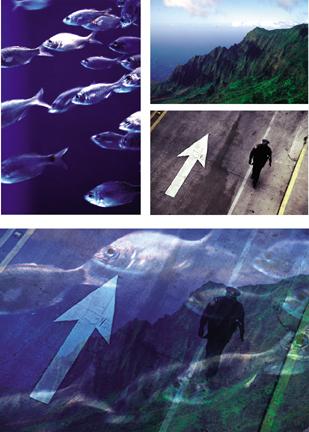Multiple Exposures, Digital Style
If you’re looking for the multiple-exposures setting on your digicam, forget about it. It probably isn’t there, unless you own a Fuji pro SLR camera or one of a handful of other models with this capability. So, what’s the creative digital photographer to do?
In the film world, multiple exposures are a great way to create interesting, unexpected visual effects. Traditionally, this was done either in-camera by exposing one frame of film many times, or in the darkroom by sandwiching negatives together.
Unfortunately, most digital cameras don’t support multiple exposures. But that doesn’t mean it can’t be done. Photoshop, the digital darkroom of choice for many, comes to the rescue.
There are a couple ways to approach gathering your source material for Photoshop. You can previsualize the final image you’re after, shoot its parts (layers) with your digital camera, and then assemble these layers on the computer. Or, if you just want to experiment, grab a few pictures out of your existing library, mush them together, and see what happens. Suddenly, every digital image in your photo library becomes potential fodder for an interesting photo montage.
Assembling Multiple Images into a Montage
For the first option, we’re going to shoot three images, as illustrated in Figure 2-13.

Figure 2-13. A photo montage
As you shoot, try to imagine each shot layered on top ...
Get Digital Photography Hacks now with the O’Reilly learning platform.
O’Reilly members experience books, live events, courses curated by job role, and more from O’Reilly and nearly 200 top publishers.

